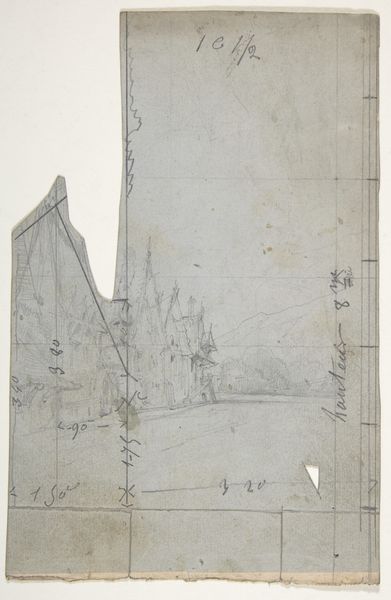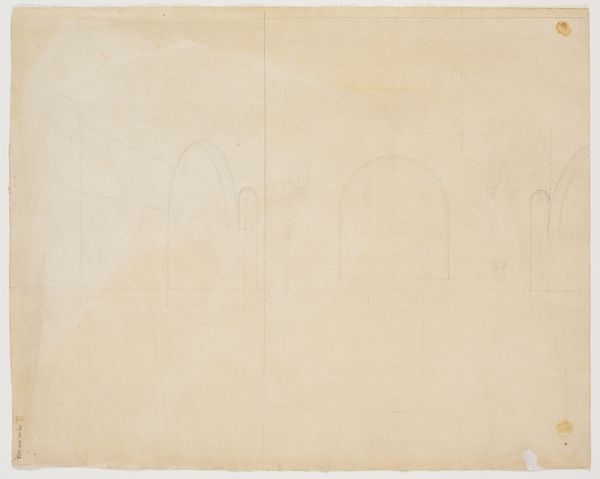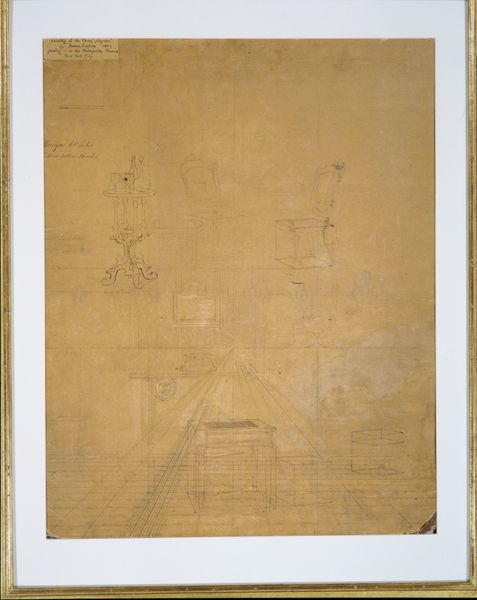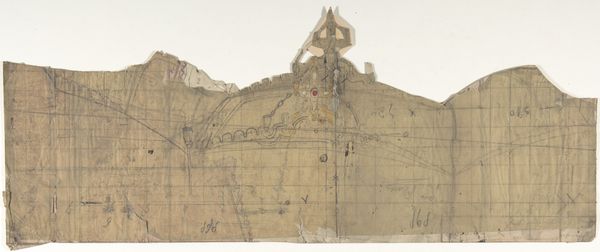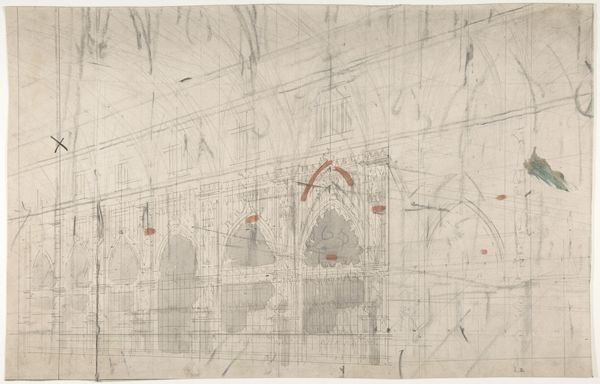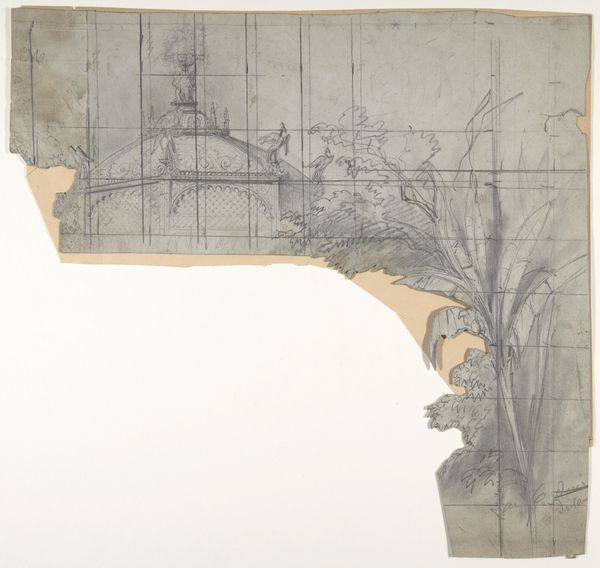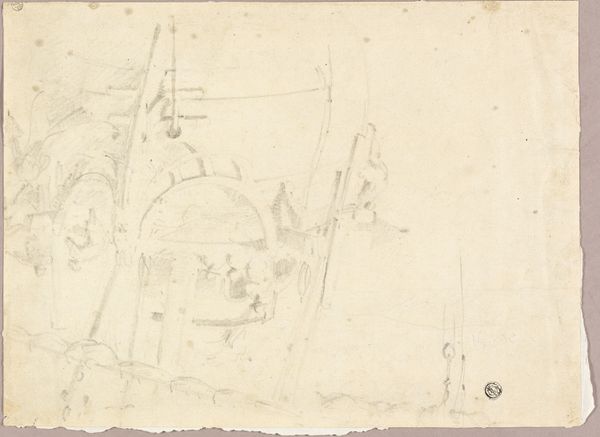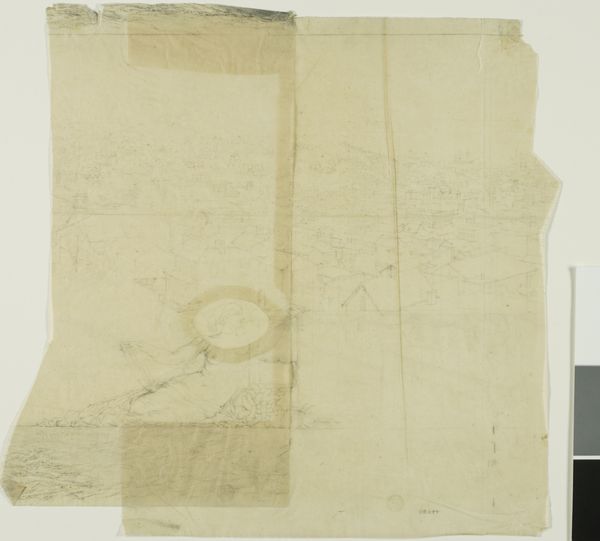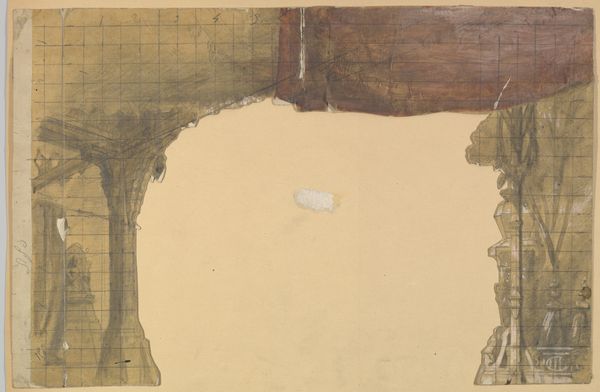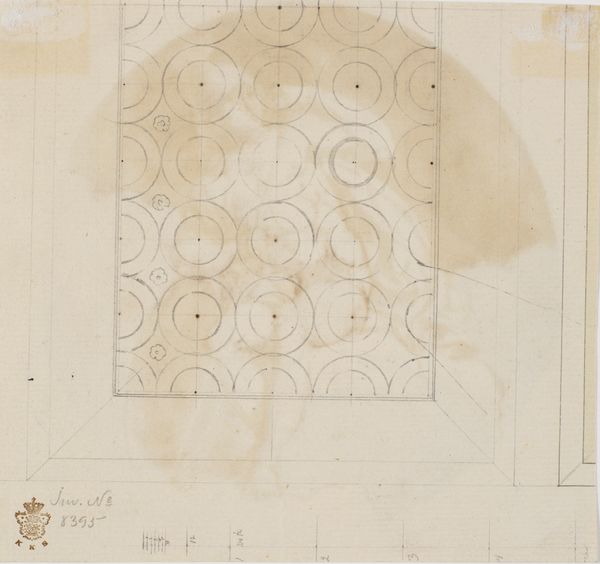
Design for a Stage Set at the Opéra, Paris: Church Interior 1830 - 1890
0:00
0:00
drawing, print, pen
#
drawing
# print
#
perspective
#
geometric
#
pen
#
history-painting
Dimensions: sheet: 14 5/16 x 18 1/16 in. (36.3 x 45.9 cm)
Copyright: Public Domain
This is Eugène Cicéri's "Design for a Stage Set at the Opéra, Paris: Church Interior," made sometime in the 19th century. It provides a glimpse into the world of Parisian opera during a time of great social and artistic change. Cicéri, as a stage designer, played a crucial role in shaping the audience's experience. The design suggests the grandeur and formality associated with both the church and the opera house. The grid structure gives insight into the mechanics of stage design, and hints at the labor required to create the elaborate sets that transported audiences. Consider the cultural significance of opera in 19th-century Paris. It was a space where social classes mixed, and where narratives of love, power, and betrayal played out against the backdrop of elaborate sets like this one. How does this stage set, with its church interior, reflect the values and beliefs of the time, and what emotional responses might it have evoked in the audience? The design allows us to reflect on the intersection of art, culture, and society in 19th-century Paris.
Comments
No comments
Be the first to comment and join the conversation on the ultimate creative platform.
